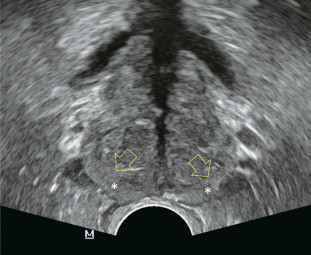Physical Address
304 North Cardinal St.
Dorchester Center, MA 02124
The most important use of colour Doppler imaging of the prostate remains as an aid in cancer detection. This is particularly relevant in patients in whom cancer is suspected based on prostate specific antigen (PSA) elevation without obvious tumour on grey scale imaging. Other uses for Doppler imaging are largely confined to detection of prostatitis and inflammatory conditions. Controversy continues surrounding diagnosis and treatment of prostate cancer. This is largely attributable to the wide range of biological behaviour found with this disease. Up to 30% of 80-year-old males will have histological evidence of prostate cancer, yet most will die from other causes. Unfortunately, a more aggressive subset remains an important cause of mortality among men, with 33,720 deaths expected in the USA in 2011.
The prostate lies immediately anterior to the rectum and inferior to the bladder. Prostatic zonal anatomy has been extensively described by McNeal. In summary, the prostate is composed of three major zonal areas; the peripheral zone, the central zone and the transition zone ( Fig. 11-1 ).

The peripheral zone is the most posterior, and the central zone is a continuation of the peripheral zone cephalad. The transition zone is the most central area of the prostate, and surrounds the urethra as it courses through the prostate. The anterior fibromuscular stroma lines the prostate anteriorally.
Become a Clinical Tree membership for Full access and enjoy Unlimited articles
If you are a member. Log in here